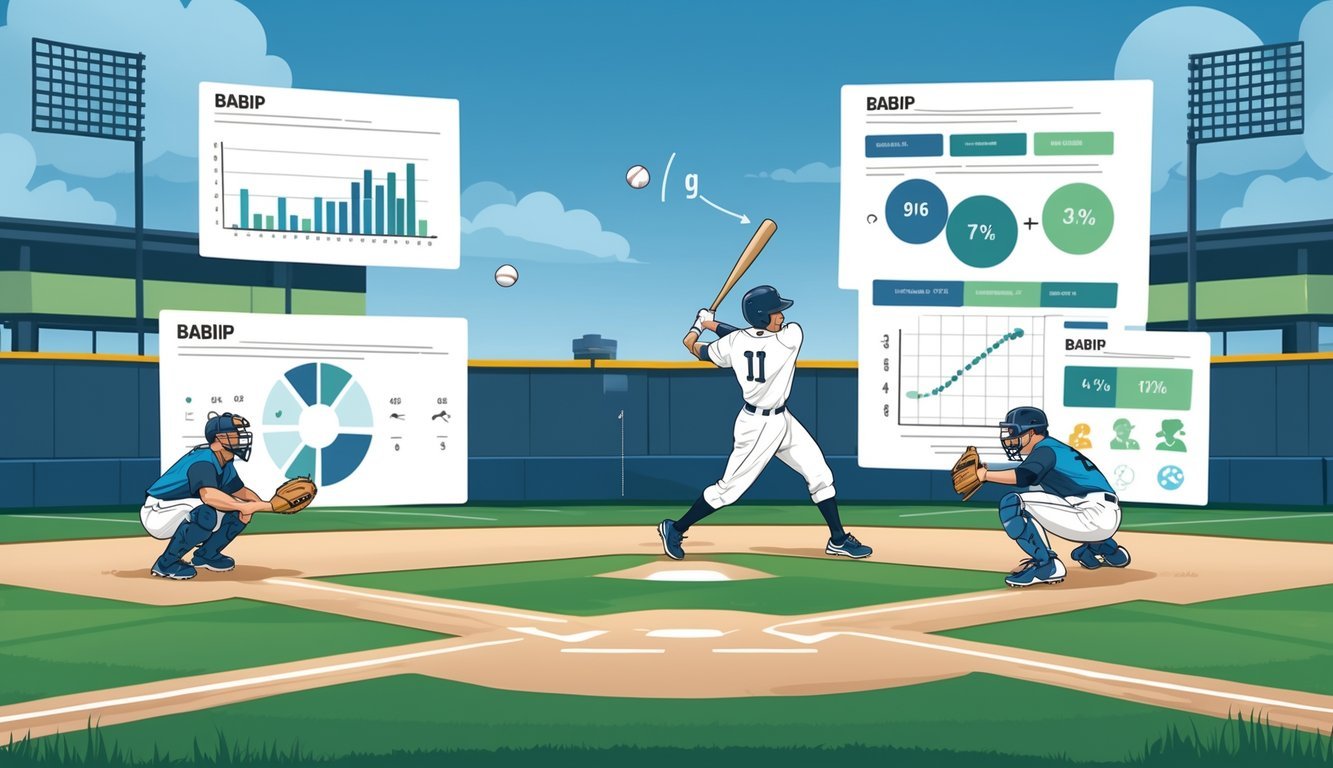PsychNewsDaily Publishers
100 Summit Drive
Burlington, MA, 01803
Telephone: (320) 349-2484
PsychNewsDaily Publishers
100 Summit Drive
Burlington, MA, 01803
Telephone: (320) 349-2484
Batting Average on Balls In Play (BABIP) measures the percentage of balls hit into play that result in hits, excluding home runs and strikeouts.

Batting average on balls in play, or BABIP, shows how often balls hit into the field actually become hits. It only counts balls put into play and leaves out home runs and strikeouts, so you get a clearer sense of a player’s luck and skill at the plate.
If you want to look past regular batting averages, BABIP gives you a better idea of how a player’s really doing.
So, why does BABIP matter? It helps you spot whether a player’s hot streak is just luck or if they’re actually good at making contact.
Teams and fans use it to catch trends and figure out if someone’s performance will last. It even helps you judge fielders.
If you want to get better at breaking down baseball stats, knowing BABIP is a must. It opens up a new way to look at hitting and adds another layer to how you see the game.

BABIP lets you see how often a ball hit into the field becomes a hit. Unlike regular batting average, BABIP focuses on what happens only when the ball is in play.
You’ll use a special formula that looks at hits and a few specific plate appearances. This gives you a more focused picture.
BABIP stands for Batting Average on Balls In Play. It tells you the percentage of balls put into the field—leaving out home runs and strikeouts—that end up as hits.
Unlike regular batting average, BABIP only cares about balls that actually go into the field. Home runs don’t count because defense doesn’t matter there, and strikeouts and walks get ignored.
When you look at BABIP, you can figure out if a player’s good at finding holes in the defense or just getting lucky. A high BABIP might mean a player finds gaps often, while a low one could just mean some bad luck or great defense.
Here’s how you figure out BABIP:
BABIP = (H – HR) / (AB – HR – K + SF)
That breaks down to:
You take home runs out of hits since those aren’t balls in play. You also remove home runs and strikeouts from at-bats for the same reason. Sacrifice flies get added because they count as balls in play.
This formula lets you see how often a hitter or pitcher gives up hits on balls that actually matter.
Batting average counts all hits divided by all at-bats, including home runs and leaving out walks and strikeouts.
BABIP only looks at what happens when the ball gets put in play. If you want to know how a player does once the ball leaves the bat, BABIP tells you more.
By dropping certain outcomes, BABIP can show the effects of luck or defense in a way batting average can’t. For example, a player might have a high batting average just because of home runs, but their BABIP could be low.
You can use BABIP with batting average to get a real sense of a hitter’s skill or a pitcher’s ability to limit hits on balls in play.

BABIP gives you a window into whether a player’s results come from skill or luck. You can use it to check out hitters and pitchers, but remember to factor in the type of batted balls, defense, and player speed.
It’s also tied to advanced stats, so you get a fuller view of player value.
A lot more than just talent goes into BABIP. The type of batted balls really matters.
Line drives almost always lead to more hits than fly balls or grounders. Players who get a lot of bloop hits or infield singles usually have higher BABIPs.
Speed counts, too. Fast runners like Dee Gordon can beat out grounders for hits that slower guys wouldn’t get.
Defense makes a difference. Good fielders cut down on BABIP by making tough plays.
Small samples can swing BABIP wildly, so over time, you’ll see it drift toward the league average, which usually sits around .300.
For hitters, BABIP can show if they’re making great contact or just getting lucky. Mike Trout and Aaron Judge, for example, keep high BABIPs because they’re just that skilled.
On the flip side, Joey Gallo’s BABIP stays low because he hits a lot of fly balls and strikes out a ton.
Pitchers are a bit trickier. BABIP measures how many balls in play go for hits, but it doesn’t always show true skill.
Take Clayton Kershaw—his BABIP stays low thanks to great defense and top-notch pitching. Flyball pitchers or those who get lots of strikeouts usually allow fewer hits on balls in play.
But honestly, BABIP for pitchers can jump around a lot with luck or weak defense, so it’s not the only stat you should trust.
Rod Carew stands out as a hitter with a sky-high BABIP. He combined great contact skills and speed, beating the league average year after year.
Clayton Kershaw’s low BABIP as a pitcher comes from his knack for limiting hard contact and having a strong defense behind him.
Joey Gallo’s BABIP stays lower than you’d expect because he hits so many fly balls and strikes out so much. That’s just his style.
These examples make it easier to see how BABIP connects to playing style, skill, and the bigger picture in MLB.
People use BABIP with stats like wOBA, FIP, and WAR to dig deeper into player value. For hitters, BABIP gives you a sense of contact quality that batting average can’t.
For pitchers, BABIP feeds into stats like DIPS (defense-independent pitching stats), which try to separate pitching from luck and fielding.
Sites like FanGraphs use BABIP to adjust for context and small sample sizes, helping you spot true talent behind the numbers.
Just remember, BABIP leaves out walks, strikeouts, and home runs, so you’ll want to pair it with other stats for the full story.

You might be curious about what BABIP actually tracks, how to calculate it, and what makes a good BABIP. It also helps you spot where skill and luck come in, and who tends to lead in this stat.
BABIP stands for Batting Average on Balls In Play. It shows how often a player gets a hit when the ball’s actually put into play, skipping home runs and strikeouts.
You take the hits on balls in play and divide by the total balls put into play. Home runs, strikeouts, and walks don’t count toward the calculation.
A BABIP around .300 is pretty typical. Anything above .320 looks strong, but if it’s way higher, luck might be part of the story.
It helps you see if a hitter is good at finding holes in the defense. For pitchers, it’s about how well they keep hits off balls in play.
Definitely. BABIP often shows luck—if it’s really high or low, something besides skill is probably going on.
You’ll usually find that the top BABIP leaders are fast hitters. These players tend to hit a lot of ground balls or line drives.
Guys with good contact skills and real speed often end up leading the pack. It’s not just about luck—speed and the ability to put the ball in play matter a lot here.